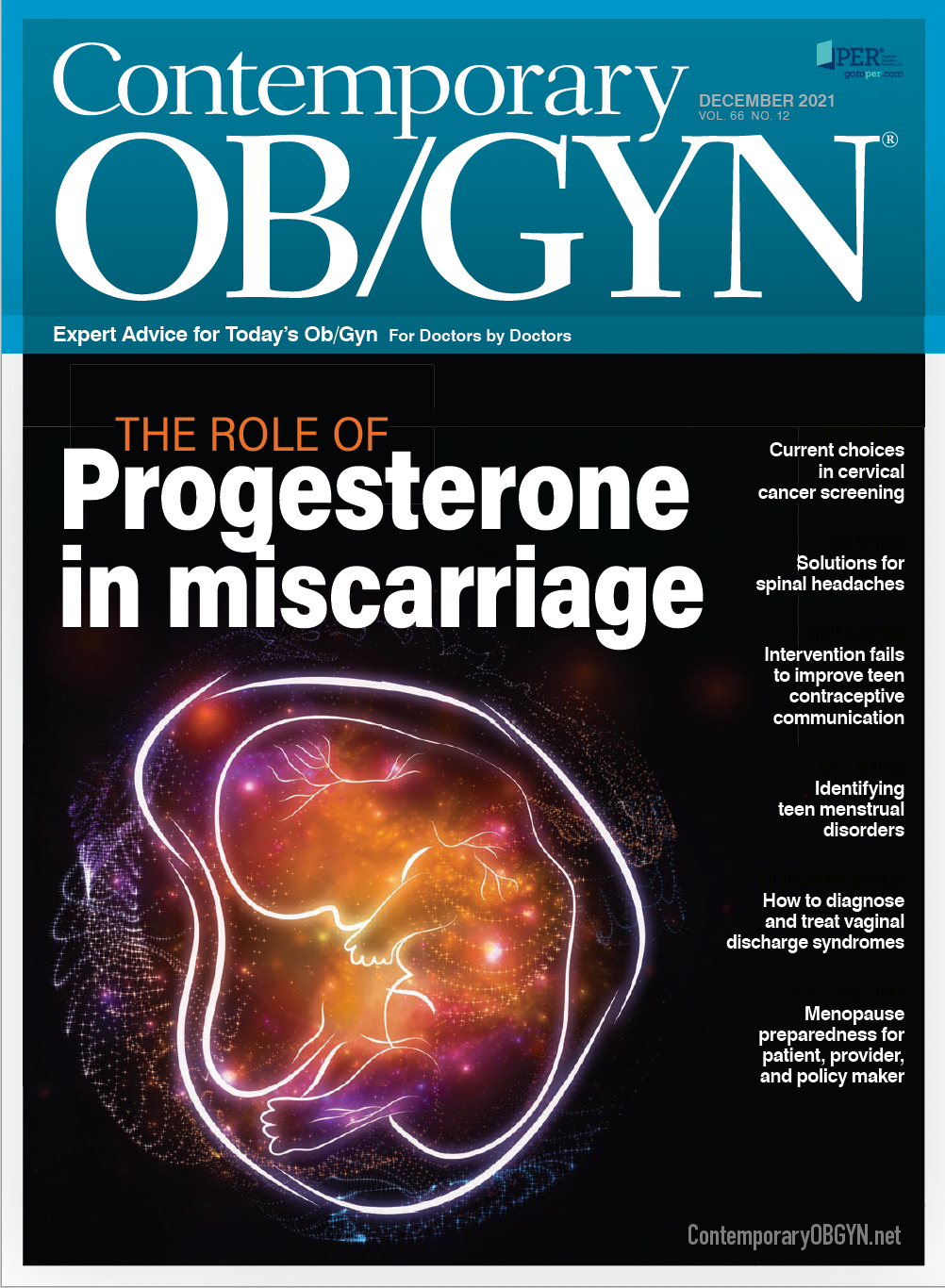Intervention fails to improve teen-to-teen contraceptive communication
Remote delivery of the SpeakOut intervention failed to increase communication, knowledge, and use of contraception among teens and their peers, according to a recently published study.
A study in the journal Contraception has concluded that remote delivery of the SpeakOut intervention failed to improve contraceptive communication, knowledge or use among participating teens or their peers.1
The intervention combines structured counseling, online resources and text reminders to encourage teens to share their experiences using intrauterine contraception (IUC) or an implant with peers.
“Despite declines in teen pregnancy rates across the Unites States, rates continue to be higher than all other industrialized countries,” said senior author Kathleen Tebb, PhD, a professor of pediatrics and adolescent medicine at the University of California, San Francisco. “We know that in adolescence, peers play an important role in influencing attitudes and behaviors and that social communication has been found to impact contraceptive decision-making.”
Kathleen Tebb, PhD

Tebb noted, however, that adolescents are frequently misinformed about contraception, and the information received from their peers has been found to be more negative than positive.
“But there has not been much research and attention devoted to interventions targeting contraceptive communication with peers; thus we embarked on this study to address that gap,” Tebb told Contemporary OB/GYN®.
The trial consisted of 520 primary female adolescents, aged 15 to 19, who were recruited via social media from 21 states and the District of Columbia between February and July 2019.
The primary participants were randomly assigned to receive SpeakOut or an attention control about alcohol consumption. Each participant in turn recruited secondary female peers, forming clusters of up to 5 peers, for a total of 581 peers.
The study’s primary outcome of contraceptive use by secondary participants was similar between the 2 groups at both 3 and 9 months post-intervention.
Compared to controls, however, primary participants receiving SpeakOut were less likely to discontinue contraception within 9 months, although the difference was not statistically significant: for IUC, 4.8% for SpeakOut vs. 7.8% for controls (P = 0.11), and for implants 7.8% vs. 9.8%, respectively (P = 0.45).
But SpeakOut failed to increase contraceptive communication among peers: 86% communication rate for SpeakOut vs. 88% for controls (P =.57).
Yet the vast majority of secondary participants were aware of the hormonal ICU, copper IUC and implant 3 months after enrolling, regardless of the intervention received by primary participants.
“We were surprised that the SpeakOut intervention did not improve adolescent contraceptive knowledge, communication or use,” Tebb said. “In contrast, our team’s pilot study conducted at 8 Planned Parenthood clinics in California indicated that SpeakOut, when delivered in person, actually increased peer contraceptive use at 3-month follow-up. This difference could be due to the fact that baseline peer contraceptive use in our current study was high to begin with, so a ‘ceiling effect’ likely limited our ability to detect an intervention effect.”
Adolescents continue to need access to accurate, evidence-based, confidential contraceptive information and services, according to Tebb.
“While remote delivery of SpeakOut did not improve contraceptive communication, knowledge or use among participants and their peers in our study, additional research is needed to understand this finding, especially because contraceptive knowledge was poor in both study groups,” Tebb said. “Efforts to support teen-to-teen contraceptive communication and ensure that teens have accurate information about the full range of contraceptive methods, including highly effective reversible contraceptives, require refinement.”
Although peers are an important source of contraceptive information, “health care providers continue to play a critical role,” Tebb said. “Additional innovative and complementary strategies are needed to improve adolescents’ knowledge of the full range of contraceptive methods and to support adolescents’ use of desired contraceptives.”
Tebb and her research team have had some success with a pre-visit interactive and individually tailored computer intervention, Health-E You/ Salud iTu, to educate and support adolescents in selecting contraception and facilitating the provision of patient-centered contraceptive services.
Disclosure:
Tebb reports no relevant financial disclosures.
Reference:
1. Tebb KP, Dehlendorf C, Rodriguez F, et al. Promoting teen-to-teen contraceptive communication with the SpeakOut intervention, a cluster randomized trial. Contraception. Published online September 11, 2021. doi:org/10.1016/j.contraception.2021.08.018

Recap on reproductive rights with David Hackney, MD, MS
December 20th 2022In this episode of Pap Talk, we spoke with David Hackney, MD, MS, maternal-fetal medicine physician at Case Western Reserve University and chair of ACOG's Ohio chapter for a full recap of where restrictions on reproductive rights have been and where they're going.
Listen
In this episode of Pap Talk, Gloria Bachmann, MD, MSc, breaks down what it means to be a health care provider for incarcerated individuals, and explores the specific challenges women and their providers face during and after incarceration. Joined by sexual health expert Michael Krychman, MD, Bachmann also discusses trauma-informed care and how providers can get informed.
Listen
No link found between hormonal contraception and clitoral adhesion severity
February 28th 2025A recent study presented at the ISSWSH 2025 Annual Meeting found no significant association between hormonal contraceptive use and the severity of clitoral adhesions, though researchers emphasize the need for further investigation.
Read More
